|
.
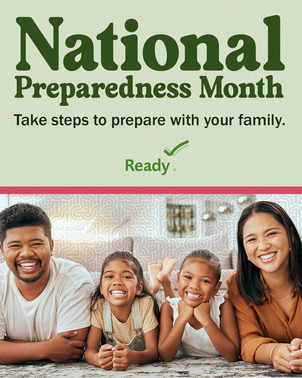
Each September, FEMA celebrates National Preparedness Month, a time to focus on preparing the nation for emergencies and disasters. FEMA’s 2023 National Household Survey showed that 65% of Asian American, Native Hawaiian and Pacific Islander individuals (AANHPI) in the United States do not believe that taking steps to prepare will make a difference. To encourage AANHPI communities to take preparedness actions, FEMA Administrator Deanne Criswell announced last May that this year’s campaign will focus on reducing preparedness barriers for AANHPI communities. To underscore this historic effort, Administrator Criswell signed a Memorandum of Agreement with the National Council of Asian Pacific Americans (NCAPA) and announced this year’s National Preparedness Month campaign theme, which is “Start a Conversation,” to close the preparedness gap and address barriers across these communities.
This partnership formalizes the collaborative, strategic approach FEMA and NCAPA will take to engage trusted leaders and institutions in the AANHPI communities to build prepared communities and a resilient nation. To help AANHPI communities across the nation to take action to keep themselves, their families and neighbors safe, FEMA’s Ready Campaign will take the following steps to reach these communities where they are and create culturally competent and in-language messaging to help get them prepared.
Reaching Asian American, Native Hawaiian and Pacific Islander Communities Where They Are
-
Hosting Roundtables and Webinars: FEMA is coordinating and working to engage with AANHPI communities through roundtables across the country. These events will enhance FEMA’s understanding of how preparedness materials are used, identify appropriate channels to share materials and gain necessary insights to better support the needs of the AANHPI communities through culturally appropriate preparedness initiatives and messaging. To ensure that we are reaching AANHPI communities where they are and seeking their input, FEMA hosted a roundtable in Massachusetts and will host additional roundtables in Mississippi, Michigan and Colorado.
Later in September, FEMA will host the following webinars:
-
Research Findings Webinar: Monday, Sept. 30 at 1:30 p.m. ET: The Ad Council and creative partners will present their research and findings on the AANHPI communities. During the webinar, they will highlight how they have used data to create impactful and relevant preparedness campaigns, share lessons learned from this year’s focus groups, as well as helpful tips for communicators. This webinar is for state, local, Tribal Nations and territorial communicators. Registration link to follow.
-
Engaging Communities and Communicating Preparedness Webinar: Monday, Sept. 23 at 2:30 p.m. ET: FEMA and partners will discuss messaging strategies for communicators to prepare their communities for existing and emerging hazards. Presenters will share takeaways from the Risk Communications, Crisis Communications & Community Engagement Summit report and set the stage for continued convenings. Summit learnings will be applied to examples of successful community engagement and risk communications for disaster preparedness. Speakers from multiple sectors will present on a project or initiative that highlights these concepts and participate in a facilitated panel discussion. Click on the link to register for the webinar.
Creating Culturally Competent and In-Language Materials
-
Providing Engaging Content: To help communities share information and start the conversation with neighbors and partners, the Ready Campaign has developed a toolkit with messaging and graphics in Chinese (simplified and traditional), Arabic, Korean, 'Ōlelo Hawai’i, Vietnamese, Tagalog and additional languages to help our partners uplift and amplify this year’s National Preparedness Month focus in a culturally competent way. Additionally, the agency is producing public service announcements featuring FEMA employees urging people in these diverse communities to take simple steps to prepare.
-
Creating New Advertisements: Since 2021, FEMA and the Ad Council have created public service announcements (PSAs) designed to resonate with other communities that may also be disproportionately affected by disasters including Latino communities, Black and African American communities and older adults. Later this year, FEMA’s Ready Campaign will launch new PSAs highlighting the AANHPI communities and showcasing how the community can prepare for future disasters.
For preparedness messaging, graphics and resources for National Preparedness Month, visit Ready.gov/September.
.

FEMA is partnering with the Environmental Protection Agency to host Climate Resilient Infrastructure: Building a More Sustainable Future during NYC Climate Week from 9 a.m. to 4 p.m. ET, Tuesday, Sept. 24.
FEMA is responding to more frequent and intense disasters than any time in history. The time is now to act as a united voice to address the impacts of climate change and prepare for a more resilient future.
This one-day summit is an opportunity to examine resilient infrastructure challenges and innovative solutions. Attendees will get to hear from FEMA and public, private and academic partners on a number of topics including nature-based solutions, net-zero energy projects, energy efficiency efforts, the use of salvaged materials and how each of these fit into nationwide resilience strategy.
-
Date: Tuesday, Sept. 24, 9 a.m. – 4 p.m.
-
Location: Alexander Hamilton U.S. Custom House 1 Bowling Green, New York City
-
Virtual Option: Participation is also available virtually. There is a capacity of 1,000 online participants.
Register today to attend this hybrid day-long session. Specific details and times about the session topics are available on the registration page.
- National Resilience Guidance: Through the Climate Lens
- Nature-Based Solutions: From Concept to Community
- From Efficiency to Net Zero: Strategies for Resilient Buildings
- Building Sustainably: Using Disaster Debris for a Greener Future
.

During National Preparedness Month, the first step to preparedness is to know what could happen where you and your family live. This helps you understand the steps you can take to make sure you have what you need to stay safe.
Throughout National Preparedness Month, the Radiological Emergency Preparedness (REP) Program will host new weekly lunch-and-learn webinars related to their issue area, community preparedness around commercial nuclear plants.
Topics and registration links are listed below. You can also find these sessions listed on FEMA Technological Hazards Division Lunch and Learns. Once registered, you will receive a meeting invitation with the link to join.
Topic: Navigating the REPP Radiological Program Manual Implementation Community on the Preparedness Toolkit.
-
Date: Thursday, Sept. 5.
-
Time: 1-2 p.m. ET.
-
Location: MS Teams - Register Here.
Topic: Contamination Monitoring for Commercial Nuclear Power Plant Incidents
-
Date: Thursday, Sept. 12.
-
Time: 1-2 p.m. ET.
-
Location: MS Teams - Register Here.
Topic: Overview of the REP Evaluator Prep Guide
-
Date: Thursday, Sept. 19.
-
Time: 1-2 p.m. ET.
-
Location: MS Teams - Register Here.
Topic: Field Team Exposure Management for Commercial Nuclear Power Plant Incidents
-
Date: Thursday, Sept. 26.
-
Time: 1-2 p.m. ET.
-
Location: MS Teams - Register Here.
Some of the resources we may reference during the sessions include:
|

For the first time in more than 15 years, FEMA is conducting a National Floodplain Administrator Needs Assessment survey of the nation’s floodplain administrators in more than 22,600 communities that participate in the National Flood Insurance Program.
We want to hear from the local officials who help protect their communities and retain existing floodplain administrators. The survey is available in English and Spanish. The survey will close on Monday, Sept. 30.
It takes approximately 20-30 minutes to complete the survey. It is primarily in “checkbox” format to choose from multiple answers. There are a few open-ended questions to provide specific thoughts as well.
Questions include the following topics:
- Determine the training needs and preferences of floodplain administrators.
- Learn about the challenges that floodplain administrators face in obtaining training.
- Call for local governments and their staff to share more about how training can be improved to help them protect their communities and retain existing floodplain administrators.
Many of the questions seek to learn more about the capacity challenges that under-resourced local governments face and the training impacts this has on floodplain administrators. The lack of training resources may be a contributor to high turnover rates for these positions.
Each year, flooding is the nation’s most frequent and costly natural disaster. Survey findings will inform a five-year National Floodplain Administrators Training Strategy that will be coordinated by the Floodplain Management Division. Well-trained and knowledgeable floodplain administrators save lives and prevent destruction caused by floods.
In 2024, FEMA is focused on the Year of Resilience. This aligns with the “people first” commitment to help build local capacity and to train a skilled workforce to withstand tomorrow’s hazards.
If you have any questions about the survey or wish to take a Spanish-language version of the survey, please contact fema-fpmtraining@fema.dhs.gov.
|
.

Nearly 40 FEMA Risk Mapping, Assessment and Planning (MAP) applications will be unavailable from 12 a.m. on Thursday, Oct. 24 through 11:59 p.m. on Sunday, Oct. 27. The full list of applications affected can be viewed on this FEMA webpage.
Applications will be offline for four days as FEMA upgrades system infrastructure to improve capacity, security and reliability, enabling better service for Risk MAP customers.
During this period, users of these applications and services will be unable to access flood risk data, historic and effective flood mapping products, view flood maps, submit data to revise existing Flood Insurance Rate Maps (FIRMs) and access key applications with other capabilities.
FEMA encourages users to plan accordingly and seek alternative methods for obtaining necessary information before the outage. Common users of Risk MAP data include emergency managers, flood plain managers, prospective homebuyers, real estate agents and insurance professionals.
The agency is making every effort to minimize the length of the outage. The vast volume of Risk MAP flood data and the extensive network of applications requires this length of outage.
All Risk MAP applications are expected to be back online and fully functional after Oct. 27.
Anyone who has questions or needs assistance should contact FEMA support at fema-riskmap-outreach@fema.dhs.gov. Visit FEMA.gov for more information on its Risk MAP products.
.

As the nation enters the middle of hurricane season, a campaign underway is seeking to remind people of the importance of flood insurance.
The National Flood Insurance Program’s six-month 2024 Hurricane Season Campaign—launched in the spring--focuses on raising awareness of increased flood risk within hurricane-prone states in regions 4 and 6 and encourages property owners and renters to get a flood insurance policy.
As hurricanes and tropical storms become more frequent and intense due to the impacts of climate change, it becomes increasingly important to take the steps necessary to prepare and purchasing flood insurance is one of the best ways to protect against the financial risks of flooding.
To reach a broad audience with information about the importance of flood insurance, this year’s campaign will share information across the portions of the country impacted by hurricanes. Outreach focuses on residents in some of the nation’s most-vulnerable areas, including counties across Alabama, Florida, Georgia, Louisiana, Mississippi, North Carolina, South Carolina and Texas. The messaging for this year’s campaign frames the decision to purchase flood insurance as the winning choice that enables both financial protection and peace of mind.
|
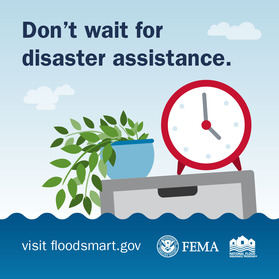
The 2024 Hurricane Season Campaign has included multilanguage strategic placements of radio, web and digital advertisements, interviews with local radio and television outlets, emails to insurance agents, new social media content and graphics and other materials targeting 48 million residents in more than 195 counties.
This campaign includes a webpage in Vietnamese, the first time the National Flood Insurance Program has created a webpage in any language other than English and Spanish. Learn more and find an insurance provider by visiting the campaign’s landing pages available in English, Spanish and Vietnamese.
For more information about the National Flood Insurance Program visit Floodsmart.gov.
|
.
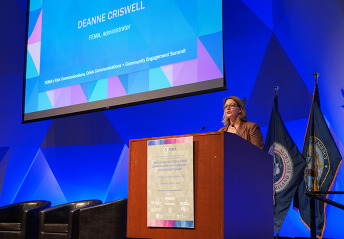
To continue supporting actionable and inclusive disaster messaging, FEMA published the 2024 Risk Communications, Crisis Communications and Community Engagement Summit Report featuring key takeaways from the inaugural event, which took place on June 10 at the National Academy of Sciences. The inaugural Summit on Risk Communications, Crisis Communications and Community Engagement included 10 co-sponsor organizations, 26 presentations and panels, 41 speakers and more than 1,200 virtual and in-person attendees. The event brought together community and communication leaders to discuss emerging challenges, develop effective messaging strategies, and enhance community resilience to address new and emerging crises.
To continue supporting inclusive and actionable communications, the Summit Report provides a comprehensive summary of lessons learned, important resources to reference in your day-to-day work, and actions the community and its leaders can take to tackle challenges and opportunities to implementing culturally competent and accessible communications before, during and after a disaster.
|
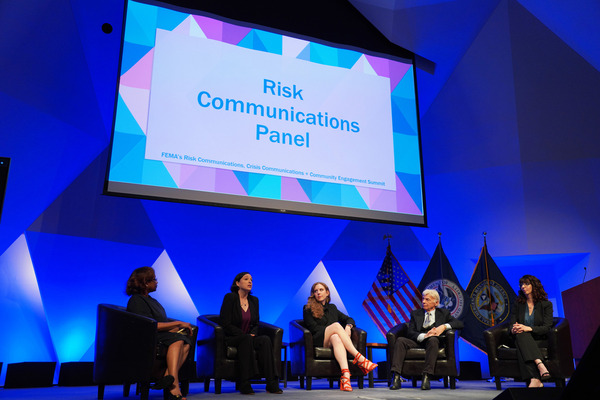
Additionally, join FEMA for our virtual Climate Week NYC event on Communicating Disaster Preparedness on Tuesday, Sept. 24, at 2:30 p.m. ET. Presenters will discuss the Summit Report and share supporting examples of successful community engagement and risk communications for disaster preparedness.
Finally, sign up to join the FEMA National Communicators Collective mailing list to continue convening and learning alongside this network of communicators. You will receive information on future events, resources and opportunities to engage with communicators across the country on challenges and opportunities related to all-hazards and emergencies.
These resources and events allow us to move this important conversation forward and create ample opportunities to coordinate with FEMA, national and local partners, and community leaders and members. Together, we can continue to improve how we message and engage with diverse communities as we face the risks of today and tomorrow.
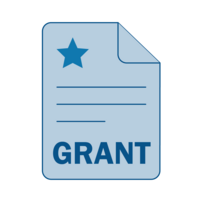
Learn about three FEMA grants designed to help communities build resilience and prepare for disasters. From funding safe rooms in Kentucky to supporting climate resilience planning in Alaska and assisting homeowners in Missouri, these grants offer financial and technical assistance to mitigate the impacts of natural hazards and protect communities.
Discover how these grant programs are making a real difference in disaster-prone areas and find out how your community can benefit from them.
Read the full blog to learn more by visiting FEMA.gov.
|
…………………………………………………………………………………………………………..
Attend FEMA’s Webinar on Conducting Focus Groups and Hotwashes for Incident After-Action Reviews
FEMA is hosting a webinar on using Focus Groups and Hotwashes to collect data for real-world incident after-action reviews through the agency’s Continuous Improvement Technical Assistance Program. The webinar is from 1-2 p.m. ET on Wednesday, Sept. 4, and will focus on these common group data collection methods as outlined in FEMA’s National Continuous Improvement Guidance.
During this webinar, FEMA aims to equip participants with an understanding of common methods for gathering incident after-action review data in group settings during or following an incident and to provide best practices for each method. Effective data collection after an incident is key to identifying best practices, strengths and areas for improvement. The webinar will also review data collection-related resources available on the FEMA Preparedness Toolkit webpage.
The webinar is designed to support the development of state, local, Tribal Nation and territorial partners, non-governmental organizations and private sector organizations with continuous improvement capabilities in emergency management.
Register in advance by visiting the webinar’s event page on FEMA.gov and clicking the "Register" button. If an issue arises while registering or logging in, email FEMA-CITAP@fema.dhs.gov.
…………………………………………………………………………………………………………..
FEMA Seeks Public Comment on the Community Rating System
FEMA has published a notice in the Federal Register seeking public comment on the National Flood Insurance Program’s Community Rating System. The public can provide comments on the suggested alternative program features for the Community Rating System by submitting a response to the Federal Register Notice Request for Information on Regulations.gov. In addition, FEMA is offering public meetings in August and individuals can register for a session.
FEMA is seeking input on the suggestions and approaches for a redesigned Community Rating System. This is based on public input from the August 2021 request for information (Docket ID “FEMA-2021-0021”) and recommendations from the July 2023 Government Accountability Office report, FEMA's New Rate Setting Methodology Improves Actuarial Soundness but Highlights Need for Broader Program Reform (GAO-23-105977).
Written comments must be submitted by Sept. 9 on the Federal eRulemaking Portal, Docket ID: FEMA-2024-0022. Please follow the instructions on the page for submitting comments and contact the Regulations.gov Help Desk if you have technical issues. Visit FEMA.gov for more information about the Community Rating System.
…………………………………………………………………………………………………………..
FEMA Releases Updated Guide to Help Communities with Resilience Grants Process
Following valuable feedback from grant applicants, FEMA updated the Hazard Mitigation Assistance Guide to make it more user-friendly.
The update consolidates information and eligibility requirements for Hazard Mitigation Assistance projects addressing air quality, drought, extreme temperatures, wildfire and wind. It also reflects recent policy changes to simplify program delivery through streamlined cost effectiveness methods and a lower benefit-cost analysis discount rate.
This edition builds on last year’s update, which incorporated climate change and future conditions, equity, building codes, capability and capacity building, nature-based solutions and community lifelines as key principles for its grant programs. The Hazard Mitigation Assistance update was also the first guide to cover Building Resilient Infrastructure and Communities.
FEMA is offering its last office-hour session to provide an overview of recent updates. Registration is now open for the following session:
Visit FEMA.gov to access the guide.
…………………………………………………………………………………………………………..
FEMA Providing $40M to Improve Resilience and Security of Public Broadcasting's Early Warning Systems
FEMA has made $40 million available for the Next Generation Warning System Grant Program. This grant program focuses on improving and upgrading the Integrated Public Alert and Warning System (IPAWS), which provides timely and effective warnings during emergencies to people in the United States. The funding helps build local capacity across the nation to withstand tomorrow's hazards.
The Next Generation Warning System Grant Program will support investments that improve the resilience and security of public broadcasting networks and systems to distribute emergency alerts, warnings and emergency information. It will help public stations, especially those covering rural areas and underserved communities, upgrade to the latest broadcast technology standards that enable advanced dissemination of emergency messaging to televisions and radios.
The Notice of Funding Opportunity is available on FEMA.gov and Grants.gov. This application period will close at 5 p.m. ET, Thursday, Sept. 12. FEMA anticipates that all awards will be finalized no later than Sept. 30.
…………………………………………………………………………………………………………..
FEMA Requests Public Comment on Updated Preliminary Damage Assessment Guide
FEMA is requesting public comments on its updated Preliminary Damage Assessment (PDA) Guide, which includes clarifications for conducting joint preliminary damage assessments, adjustments on eligibility requirements and reviews on exceptions or special considerations for Tribal Nations. The 30-day public comment period opened July 22 and written comments may be submitted on FEMA.gov through Thursday, Sept. 12.
The guide helps emergency management officials at all levels of government efficiently complete accurate and consistent preliminary damage assessments that align with the Stafford Act Presidential disaster declaration request requirements.
Any remarks received during the comment period will be reviewed and considered for the final version of the PDA Guide.
…………………………………………………………………………………………………………..
Attend FEMA Webinars on the New National Resilience Guidance
FEMA is proud to announce the release of the National Resilience Guidance. The guidance offers a unifying vision of resilience and the principles and steps all communities and organizations can take to increase their resilience in every sector and discipline.
FEMA will host a series of 60-minute webinar sessions in September and October to discuss the National Resilience Guidance and additional resources available to help new and experienced resilience practitioners improve their communities’ resilience.
Register for the following webinars:
If you require assistive accommodations to participate in these sessions, please email us at national-resilience@fema.dhs.gov. To view the document and learn more about the webinar sessions, please visit the FEMA website at National Resilience Guidance | FEMA.gov.
…………………………………………………………………………………………………………..
Register for the Great ShakeOut!
Earthquakes can happen anywhere with little to no warning. Do you know how to keep your family, employees or stakeholders safe? Knowing what to do before a big earthquake can determine how well you survive and recover. Join FEMA in the world's largest earthquake drill on Oct. 17!
Register today so that you or your organization will:
- Be counted in the largest-ever earthquake drill in the world!
- Be listed with other participants in your area, if desired.
- Set an example that motivates others to participate and prepare.
- Get updates with ShakeOut news and preparedness tips.
- Have peace of mind that you, your family, your co-workers and millions of others will be better prepared to survive and recover quickly from the next big earthquake!
Get ready to DROP, COVER and HOLD ON. Spread the word! Please ask friends and family to text SHAKEOUT to 43362. Visit Earthquakes | Ready.gov to learn more about how to stay safe before, during and after an earthquake.
…………………………………………………………………………………………………………..
|